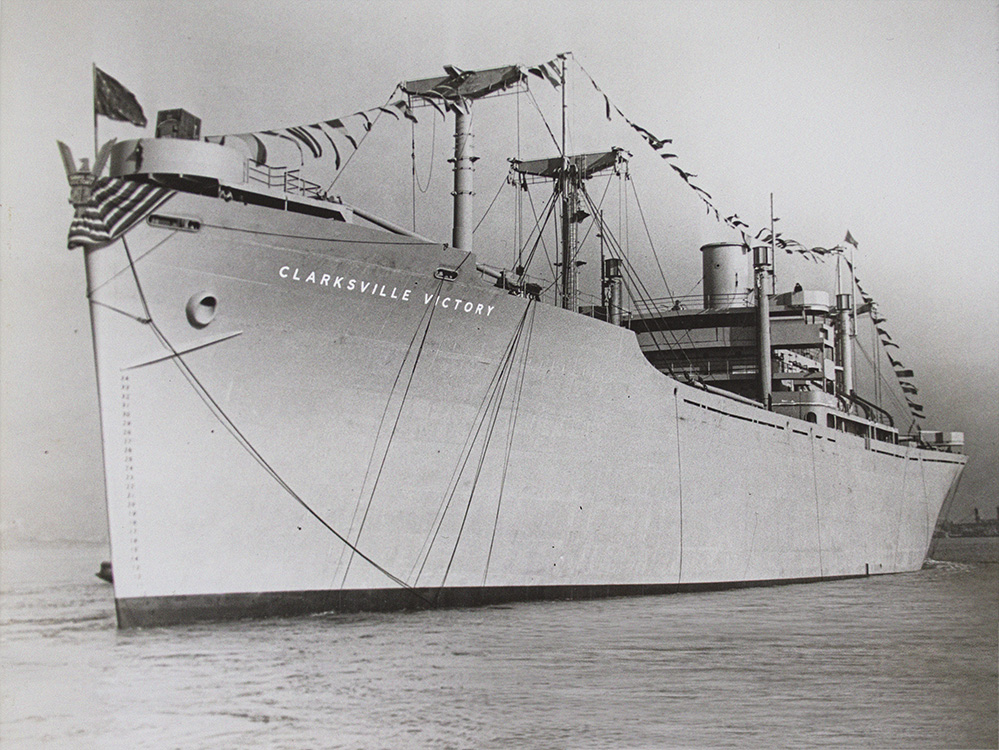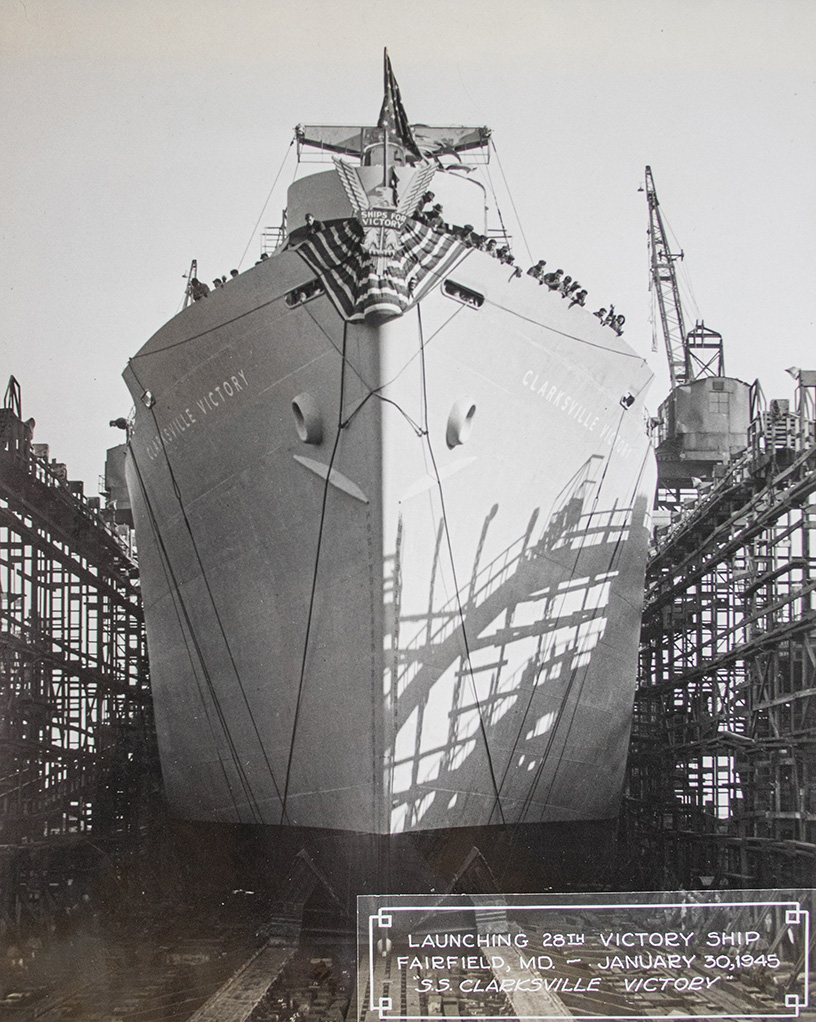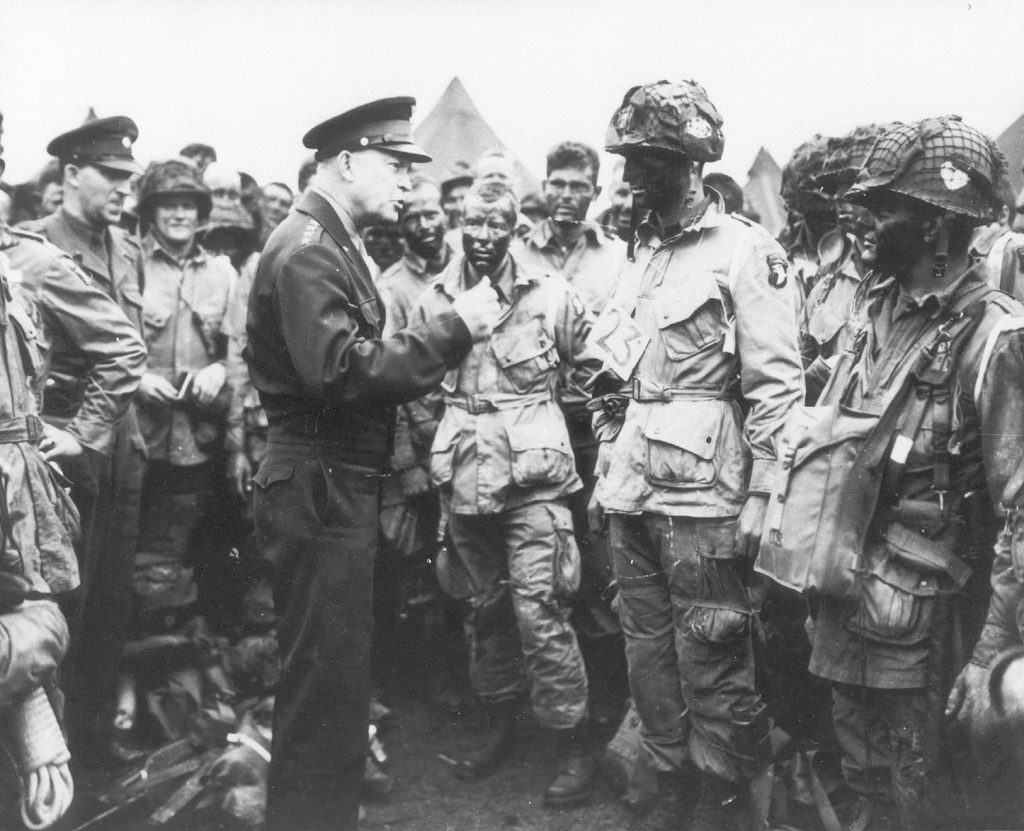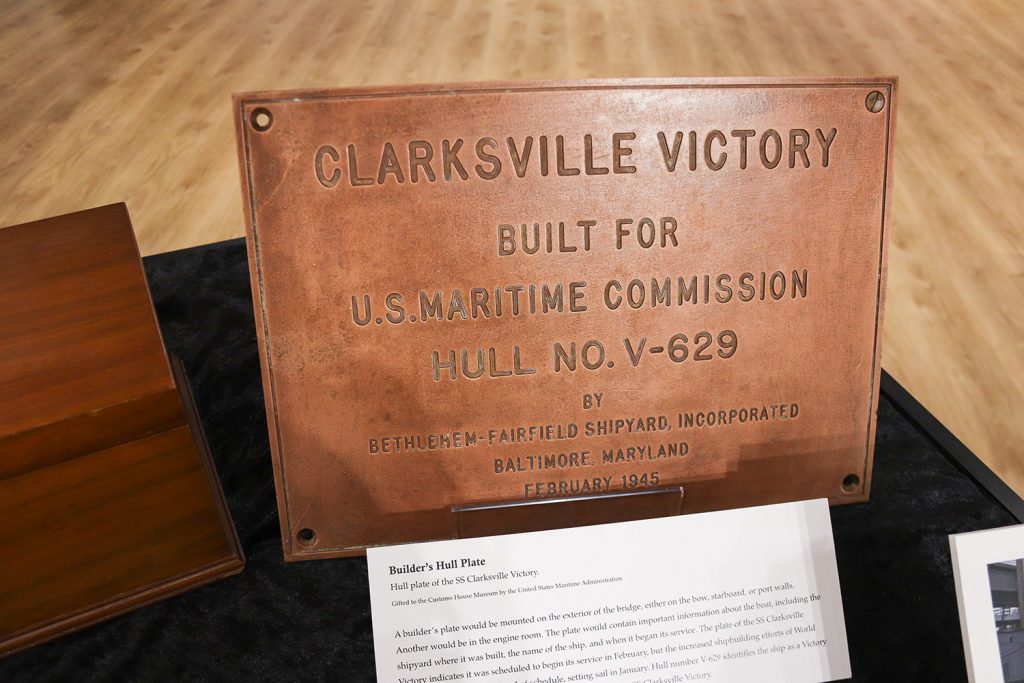
Written By Meghan Gattignolo
The Customs House Museum & Cultural Center recently acquired a piece of World War II history. The builder’s hull plate of the SS Clarksville Victory now has a place in the Museum’s permanent collection – the culmination of a storied history since first setting sail in a fleet of Victory ships in 1945. Read on to learn more about why these ships were built and what they meant for the war effort.
From Liberty to Victory
In 1940, the British needed cargo ships to help them deliver supplies to the battlefield. U.S. shipyards were contracted to build a fleet of about 60 ships, dubbed Liberty ships. These large ships were redesigned by the U.S. Maritime Commission to be used by American operations as well, and the new design made the ships easy and fast to mass produce. During the course of the war, the U.S. found they could build these ships faster than the German U-boats could sink them. Liberty ships could carry over 10,000 tons in cargo and served the war effort well, but they could be slow and problematic. The U.S. Maritime Commission quickly followed up the Liberty design with the Victory ship.

SS Clarksville Victory
From the Museum’s Collections

SS Clarksville Victory
From the Museum’s Collections
New and Improved
The need for a better ship design was apparent when the hulls of the Liberty ships began to crack in the rough and frigid North Atlantic waters. The Victory ships were constructed to be more modern and efficient – they were 60 percent faster and could hold even more cargo than the Libertys. Many Victory ships were built strictly as transport and cargo vehicles; however, a little over 100 were built as attack vessels, manned and maintained by U.S. Navy personnel. The Libertys continued to be built until the last year of the war, and the production of Victory ships started in 1943. A total of 534 Victory ships were built, 218 of which were named in honor of American cities.
Clarksville’s Victory
Built in early 1945, the SS Clarksville Victory was named in honor of Clarksville, Tennessee. The city and its residents were deeply involved in the war effort, from working in factories that made products to support soldiers on the battlefield, to learning to live with a new military installation nearby. Camp Campbell opened in 1942, soon after the attack on Pearl Harbor in December 1941. Land for the post came from Clarksville families, and Camp Campbell housed German POWs who were often outsourced as labor to nearby farms. World War II was uncomfortably close to home for Clarksville residents.

Supreme Allied Commander Gen. Dwight D. Eisenhower speaks to 101st Airborne Division paratroopers. Courtesy of U.S. Army
Afterlife
The last Victory ship was launched in 1946, after the end of World War II. However, the end of war was not the end of the Victory fleet’s usefulness. Many ships were converted to military use, some seeing new life as Navy vessels, missile transports and radar ships. Others, including the Clarksville Victory, were crucial to the transport of livestock and other aid to war-torn European countries in the decades following WWII.
Today, several remaining Victory ships continue their life as museums, giving visitors a closer look at what life was like on board. The American Victory in Tampa, Florida; the Red Oak Victory in Richmond, California and the Lane Victory in San Pedro, California work to restore these landmarks to seaworthy condition while allowing guests to step back in time.

The original SS Clarksville Victory hull-plate
From the Museum’s Collections
Come check out the Museum’s newest acquisition, a piece of the original Clarksville Victory ship, on display in the Lobby throughout the month of November.
References
The Victory Ships | Defense Media Network
(44) WORLD WAR II VICTORY SHIP FILM “HANNIBAL VICTORY” PART 1 28452 – YouTube
https://professionalmariner.com/where-have-all-the-victory-ships-gone/
World War II: The Liberty Ship Program (thoughtco.com)

Meghan E. Gattignolo
Meghan E. Gattignolo is a freelance writer and longtime Clarksville, TN resident. She loves to obsess about historical subjects and annoy her family daily with unsolicited random facts. Meghan holds a History B.A. from Austin Peay State University and lives in town with her husband and two daughters.
Becky Wood, Technical Writer, edits each blog post. Maegan Collins, Marketing Communications Manager, prepares photographs and visual images as well as prepares the blog posts for the web.